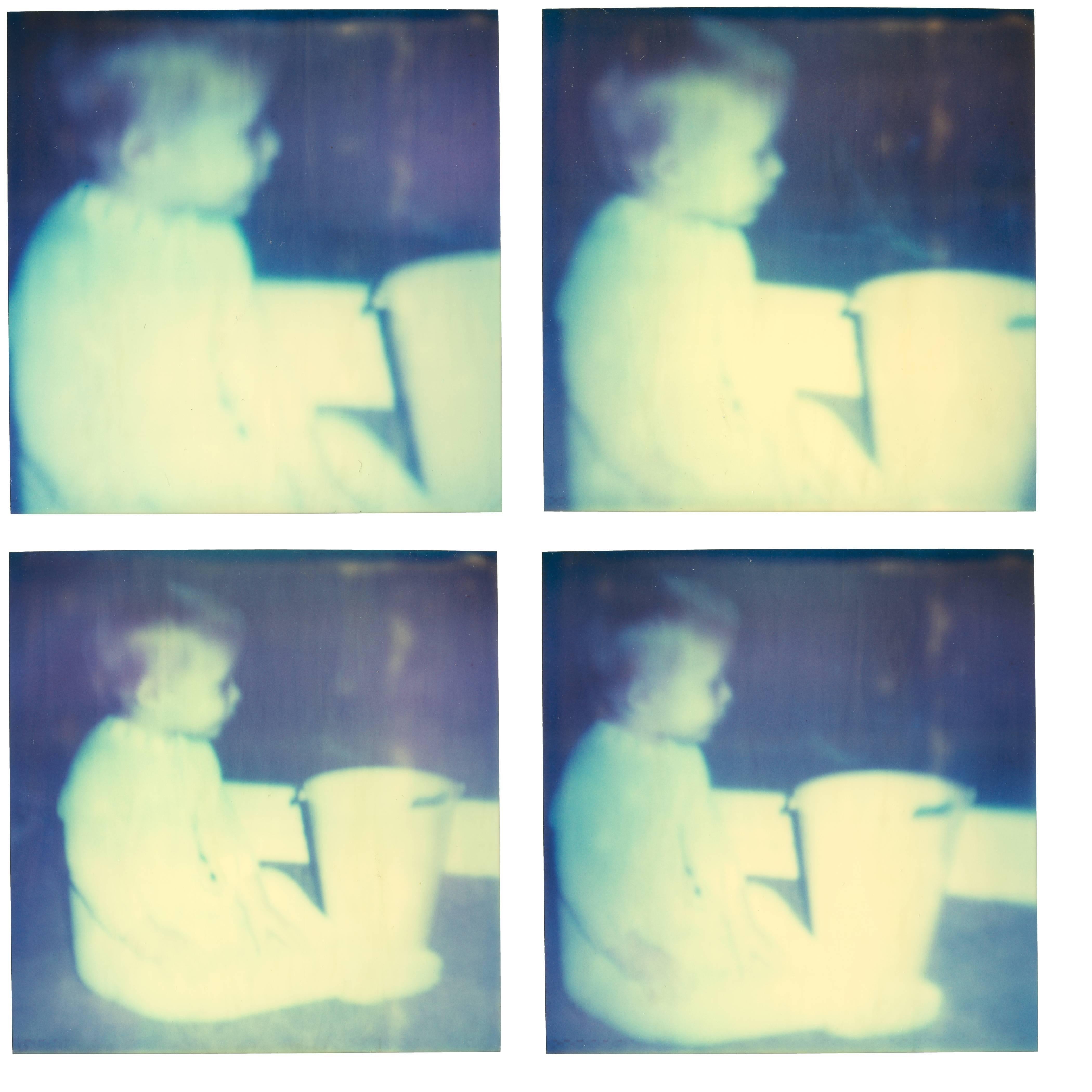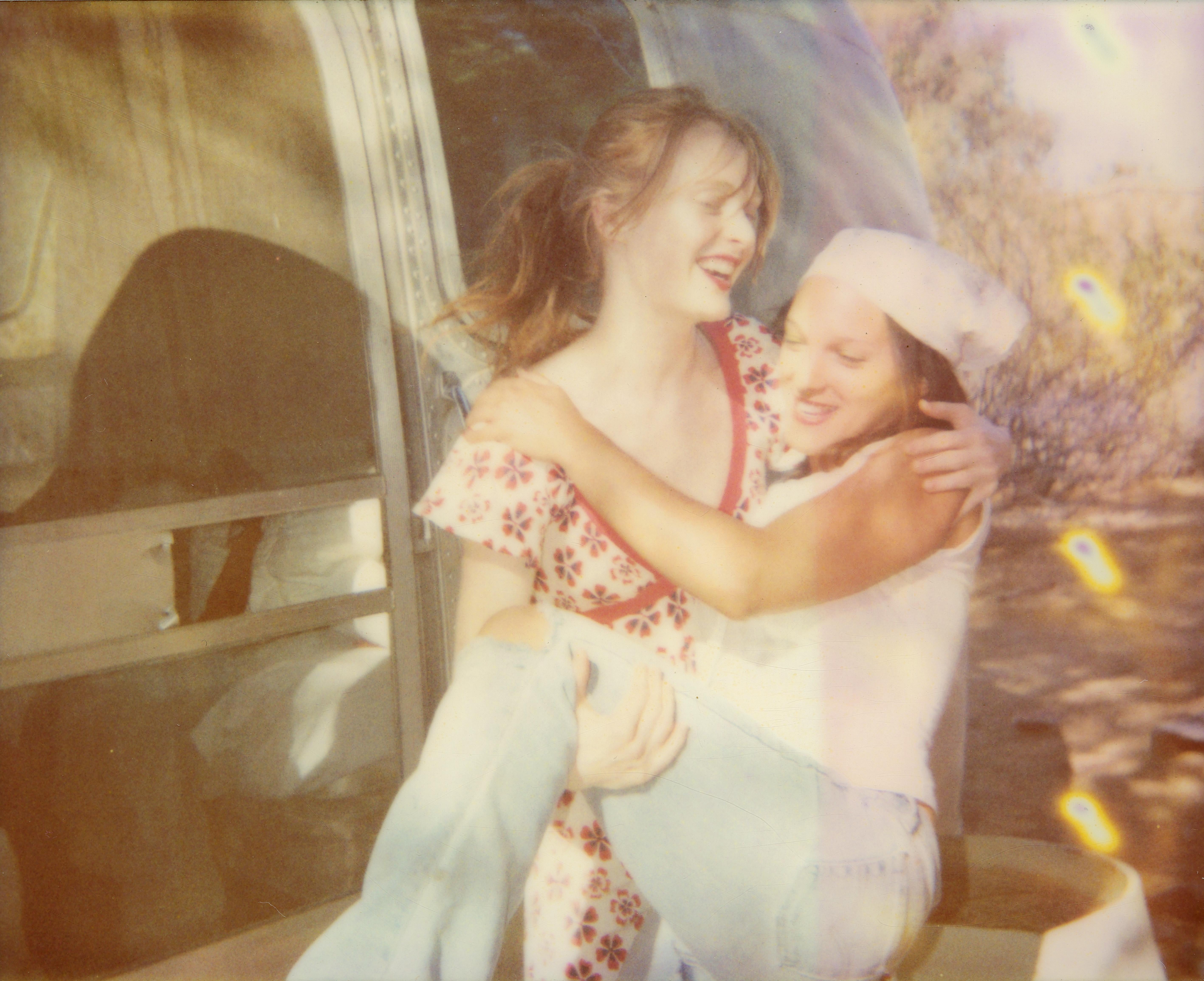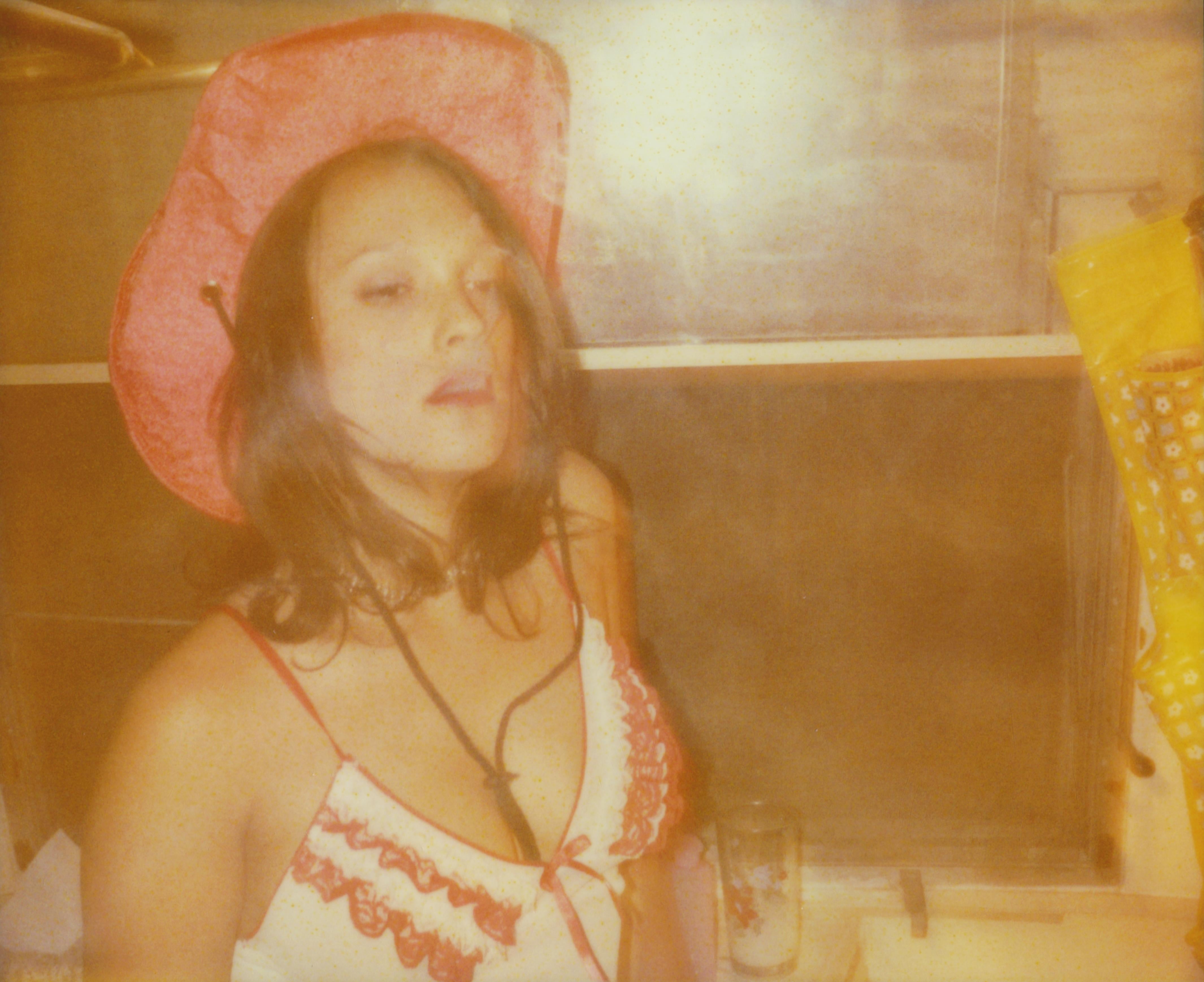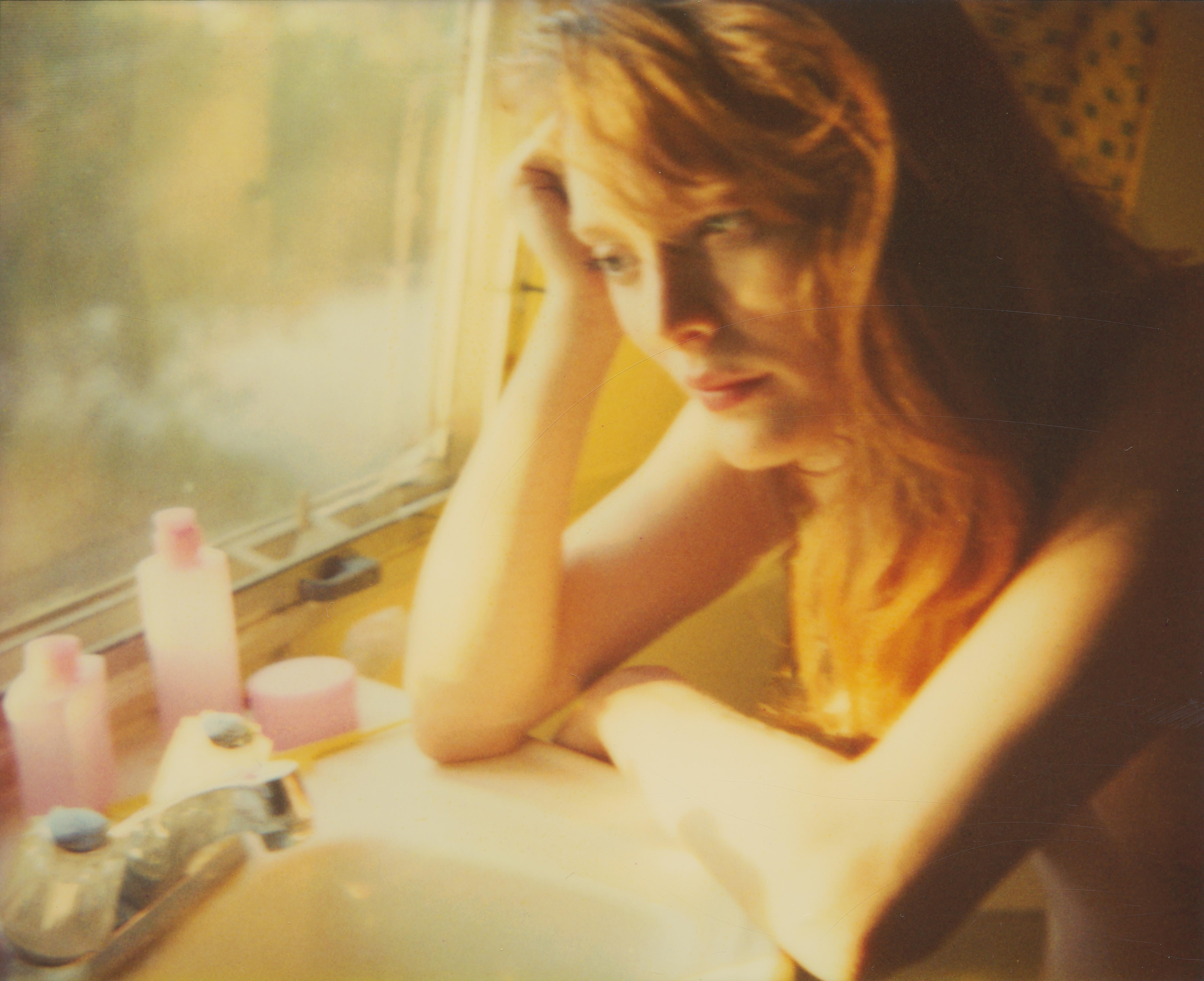Items Similar to Aimless (Wastelands), triptych, analog, mounted - Polaroid, 21st Century, Color
Want more images or videos?
Request additional images or videos from the seller
1 of 15
Stefanie SchneiderAimless (Wastelands), triptych, analog, mounted - Polaroid, 21st Century, Color2003
2003
About the Item
Aimless - It all began quite simply I was very happy - (Wastelands), triptych - 2003
Edition 2/5,
57 x 56 cm each, installed 57 x 180cm,
3 analog C-Prints, hand-printed by the artist on Fuji Crystal Archive Paper,
based on the 3 Polaroids.
Mounted on Aluminum with matte UV-Protection.
Artist inventory Number 1158.02.
Signed on Verso.
For sale is a piece from the Wastelands series.
Exhibited:
Wastelands, Städtische Galerie, Waldkraiburg, Germany (S) (2006) / Wastelands, Zephyr, Mannheim, Germany (S) (catalog) (2006) Wastelands, Kunstverein Recklinghausen, Germany (S) (2007)
Published in:
WASTELANDS published by edition braus, Wachter Verlag, Heidelberg, 2006 (monograph)
Reality with the Tequila:
Stefanie Schneider’s Fertile Wasteland
by James Scarborough
“How much more than enough
for you for I for both of us darling?”
(E. E. Cummings)
Until he met her, his destiny was his own. Petty and inconsequential but still his own. He was cocksure and free, young and unaccountable, with dark hair and aquiline features. His expression was always pensive, a little troubled, but not of a maniacal sort. He was more bored than anything else. With a heart capable of violence.
Until she met him, she was pretty but unappreciated. Her soul had registered no seismic activity. Dust bowl weary, she’d yet to see better days. A languorous body, a sweet face with eyes that could be kind if so inclined.
Until she met him, she had not been inclined.
It began when he met her. She was struck in an instant by his ennui. The sum of their meeting was greater than the imbroglios and chicaneries of their respective existences. He was struck by the blank slate look in her eyes. They walked, detached and focused on the immediate, obscenely unaware of pending change across a terrain of mountainous desert, their eyes downcast and world-weary, unable to account for the buoyant feeling in her heart. His hard-guy shtick went from potentiality to ruse. The gun was not a weapon but a prop, a way to pass time. Neither saw the dark clouds massing on the horizon.
They found themselves alone in the expanses of time, unaware of the calamity that percolated even as they posed like school kids for the pictures. Happiness brimmed in that wild terrain. Maybe things were beginning to look up.
That’s when the shooting started…
Stefanie Schneider assumes that our experience of lived reality (buying groceries, having a relationship with someone, driving a car) does not correspond to the actual nature of lived reality itself, that what we think of as reality is more like a margarita without the tequila.
Stefanie Schneider’s reality is reality with the tequila. She does not abolish concepts that orient us, cause and effect, time, plot, and story line, she just plays with them. She invites us to play with them, too. She offers us a hybrid reality, more amorphous than that with a conventional subject, verb, and predicate. Open-ended, this hybrid reality does not resolve itself. It frustrates anyone with pedestrian expectations but once we inebriate those expectations away, her work exhilarates us and even the hangover is good. An exploration of how she undermines our expectation of what we assume to be our lived reality, the reasons why she under- mines our expectations, and the end-result, as posited in this book, will show how she bursts open our apparatus of perception and acknowledges life’s fluidity, its density, its complexity. Its beauty.
She undermines expectations of our experience of reality with odd, other- worldly images and with startling and unexpected compressions and expansions of time and narrative sequence. The landscape seems familiar enough, scenes from the Old West: broad panoramic vistas with rolling hills dotted with trees and chaparral, dusty prairies with trees and shrubs and craggy rocks, close-up shots of trees. But they’re not familiar. These mis-en-scenes radiate an unsettling Picasso Blue Period glow or the intense celestial blue of the cafe skies that Van Gogh painted in the south of France. Yellow starbursts punctuate images as if seen through the viewfinder of a flying saucer. At the same time, objects appear both vintage and futuristic, the landscape of a post-apocalyptic world.
Landscapes change seemingly at random as do the seasons. Stefanie Schneider offers no indication of how time flows here, except that it conceivably turns in on itself and then goes its merry way. Time is a river whose source is a deep murky spring which blusters about with an occasional swirling eddy.
That Stefanie Schneider thwarts an easy reading is obvious but why does she do this? Since she will not countenance anything linear, logical, or sequential, and because she does not relish anything concrete and specific, she has to roil things up a bit. Nor does she seem comfortable with a book of images that is settled, discrete, and accountable. Instead she wants to create a panoply of anxious moments that refuse to settle down into any predetermined reading. She seeks to assemble the elements, establish a provisional cosmology and then let each of us bring our own life experiences to bear on the enterprise. She unravels the paucity of a universe compromised by a matrix of either/or and replaces it with a kaleidoscopic neither/both cornucopia.
No fan of Descartes, she does not adhere to anything predicated on cogito ergo sum. No, the chance to present a universe of limitless iterations and utterances, open-ended, casualty-thwarting, intrigues her. She broaches a Heraclitan world: she shows that attempts to master, manage, and hoard time prove to be as elusive as a blind man trying to grab a salmon barehanded from a cold mountain stream. Even within the clear cut parameters of the Old West universe onto which she gloms, she shows that time is a bandit, that it is a mirage, that it is as unpredictable as it is indefinable and infinite. She coaxes us, scene by scene a slow- motion, out-of-sequence film clip, to agree with her that a running moat of lived reality easily overwhelms a castle of rationality.
Stefanie Schneider does not mount a demolition effort much less a de- construction one. Rather, she dismantles our expectations and sets about rebuilding not things but their connections anew. She is the mistress of the synapses. Indeed all these annoying ambiguities and irritating ambiances set the stage for a very particular certainty, one kernel of truth amidst these skewed and open-ended fields of inquiry. What connects all these images, in whatever order they might be presented1, is what I call an Augenblick, the mental distance between each page in whose expanse occurs the processing of shards of lived experience between these blinks of an eye that comprise the pages of Wastelands. During these innumerous Augenblicke, we take whatever shifts and turns that Stefanie Schneider throws at us, recalibrate our bearings, and then move on, at least until the next inevitable obstruction.
Irritating (and enlightening) as these shots may be, they’re nothing new. Rilke writes that, instead of trying to understand the quiddities of things, we should just be joyous at their mystery, just assume that they’re written in a lovely script that neither you nor anyone else can ever understand. Keats writes about being “awake forever in a sweet unrest,” although he’s talking about love. Stefanie Schneider makes us work for this idea of an Augenblick, but the result is worth it. The scenes and their sequencing dazzle us in a Borgesian Hall of Mirrors. Stefanie Schneider shows us that reality is anything but linear and user-friendly, but once one becomes accustomed to her enhanced dimension of space and time, we see the world in all its multifarious beauty and rapture. For that reason, Stefanie Schneider’s Augenblicke show us that reality may be a wasteland but it is as fertile as fertile can be.
1 I refer to Julio Cortazar’s novel, Hopscotch, in which he presents his story in a linear
way, with consecutive chapters that follow a particular coherence. In a note at the be-
ginning of the novel, he suggests an alternative reading via a new sequence of chapters.
So instead of reading chapter 1 first, chapter 2 second, you read, say chapter 57 first,
chapter 32 second, chapter 1 third and so on to form a new story. Similarly, Stefanie
Schneider’s Wastelands offers a multitude of coherences.
- Creator:Stefanie Schneider (1968, German)
- Creation Year:2003
- Dimensions:Height: 22.45 in (57 cm)Width: 70.87 in (180 cm)Depth: 0.12 in (3 mm)
- More Editions & Sizes:Not framed or mounted, Edition 4/5Price: $4,000
- Medium:
- Movement & Style:
- Period:
- Condition:
- Gallery Location:Morongo Valley, CA
- Reference Number:1stDibs: LU652313664862
About the Seller
4.9
Platinum Seller
These expertly vetted sellers are 1stDibs' most experienced sellers and are rated highest by our customers.
Established in 1996
1stDibs seller since 2017
953 sales on 1stDibs
Typical response time: 2 hours
- ShippingRetrieving quote...Ships From: morongo valley, CA
- Return PolicyA return for this item may be initiated within 7 days of delivery.
More From This SellerView All
- White Plastic Bucket - Stay - with Ryan Gosling - from his Memory SequenceBy Stefanie SchneiderLocated in Morongo Valley, CAWhite Plastic Bucket (Stay), from Ryan Gosling's memory sequence. 2006, 85x85cm, 4 pieces, each 39x38.5cm, Edition 2/5, analog C-Prints, printed by the artist on Fuji Archive Crysta...Category
Early 2000s Contemporary Figurative Photography
MaterialsMetal
- Moving in Together (Till Death do us Part) - analog, Contemporary, mountedBy Stefanie SchneiderLocated in Morongo Valley, CAMoving in Together (Till Death do us Part) - 2008 125x154cm, Edition 1/5. Analog C-Print, hand-printed by the artist on Fuji Crystal Archive Paper, based on the Polaroid. Certifi...Category
Early 2000s Contemporary Color Photography
MaterialsMetal
- Red Shoes (Stage of Consciousness) starring Radha Mitchell - 40x50cm, mountedBy Stefanie SchneiderLocated in Morongo Valley, CARed Shoes (Stage of Consciousness) - 2007 40x50cm, Edition of 10 plus 2 Artist Proofs. Archival C-print, based on the Polaroid. Mounted on Dibond with matte UV-Protection. Signed...Category
Early 2000s Contemporary Color Photography
MaterialsMetal
- 'Margarita smokes in Bathroom' (Till Death do us Part) - Polaroid, ContemporaryBy Stefanie SchneiderLocated in Morongo Valley, CAMargarita Smokes in Bathroom II (Till Death do us Part), 2007, 40x50cm, Edition 1/5, analog C-Print, printed by the artist, mounted on Aluminum with matte UV-Protection, based on a...Category
Early 2000s Contemporary Figurative Photography
MaterialsMetal
- Sunset II (Till Death do us Part) - Polaroid, Contemporary, 21st Century, WomenBy Stefanie SchneiderLocated in Morongo Valley, CASunset II (Till Death do us Part) 90x112cm, Edition 1/5, 2005 Analog C-Print print, hand-printed by the artist, based on a Polaroid. Signed on verso Artist Inventory No. 9495.01. ...Category
Early 2000s Contemporary Color Photography
MaterialsMetal
- Sunset (Till Death do us Part) - Polaroid, Contemporary, 21st Century, WomenBy Stefanie SchneiderLocated in Morongo Valley, CASunset (Till Death do us Part) 90x112cm, Edition 1/5, 2005 Analog C-Print, hand-printed by the artist, based on a Polaroid. Artist Inventory No. 9493.01. Mounted on Aluminum with...Category
Early 2000s Contemporary Color Photography
MaterialsMetal
You May Also Like
- Tyler Shields - Pills, Photography 2014, Printed AfterBy Tyler ShieldsLocated in Greenwich, CTSeries: Mouths Chromogenic Print on Kodak Endura Luster Paper All available sizes and editions: 20" x 30" 30" x 40" 40" x 60" 48" x 72" 63" x 84" Editions of 3 + 2 Artist Proofs Tyl...Category
2010s Contemporary Color Photography
MaterialsLuster, Archival Paper, Photographic Paper, C Print, Digital, Archival P...
- Tyler Shields - Odysseus, Photography 2015, Printed AfterBy Tyler ShieldsLocated in Greenwich, CTSeries: Sirens Chromogenic Print on Kodak Endura Luster Paper All available sizes and editions: 20" x 30" 40" x 60" 48" x 72" 63" x 84" Editions of 3 + 2 Artist Proof The idea behi...Category
2010s Contemporary Color Photography
MaterialsLuster, Archival Paper, Photographic Paper, C Print, Digital, Archival P...
- Tyler Shields - Picnic, Photography 2018, Printed AfterBy Tyler ShieldsLocated in Greenwich, CTSeries: Suspense Chromogenic Print on Kodak Endura Luster Paper All available sizes and editions: 20" x 30" 30" x 40" 40" x 60" 48" x 72" 63" x 84" Editions of 3 + 2 Artist Proofs T...Category
2010s Contemporary Color Photography
MaterialsLuster, Digital Pigment, Archival Pigment, Digital, C Print, Photographi...
- Tyler Shields - Lure, Photography 2015, Printed AfterBy Tyler ShieldsLocated in Greenwich, CTSeries: Sirens Chromogenic Print on Kodak Endura Luster Paper All available sizes and editions: 20" x 30" 40" x 60" 48" x 72" 63" x 84" Editions of 3 + 2 Artist Proofs The idea behi...Category
2010s Contemporary Color Photography
MaterialsLuster, Archival Paper, Photographic Paper, C Print, Digital, Inkjet, Ar...
- Tyler Shields - Underwater Kiss, Photography 2013, Printed AfterBy Tyler ShieldsLocated in Greenwich, CTSeries: Submerged Chromogenic Print on Kodak Endura Luster Paper All available sizes and editions: 20" x 30" 40" x 60" 63" x 84" Editions of 3 + 2 Artist Proofs Tyler Shields is a p...Category
2010s Contemporary Color Photography
MaterialsLuster, Archival Paper, Photographic Paper, C Print, Digital, Archival P...
- Tyler Shields - Underwater Kiss II, Photography 2013, Printed AfterBy Tyler ShieldsLocated in Greenwich, CTSeries: Submerged Chromogenic Print on Kodak Endura Luster Paper All available sizes and editions: 20" x 30" 40" x 60" 48" x 72" 63" x 84" Editions of 3 + 2 Artist Proofs Tyler Shie...Category
2010s Contemporary Color Photography
MaterialsLuster, Paper, Archival Ink, Archival Paper, Photographic Paper, C Print...





